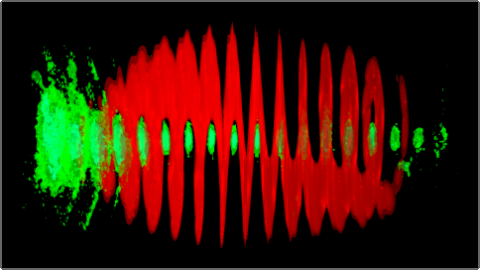D. Blackman, Y. Shi, S. Klein, M. Cernaianu, D. Doria, P. Ghenuche, and A. Arefiev, "Electron acceleration from transparent targets irradiated by ultra-intense helical laser beams", Communications Physics 5, 116 (2022).
The concept of electron acceleration by a laser beam in vacuum is attractive due to its seeming simplicity, but its implementation has been elusive, as it requires efficient electron injection into the beam and a mechanism for counteracting transverse expulsion. Electron injection during laser reflection off a plasma mirror is a promising mechanism, but it is sensitive to the plasma density gradient that is hard to control. We get around this sensitivity by utilizing volumetric injection that takes place when a helical laser beam traverses a low-density target. The electron retention is achieved by choosing the helicity, such that the transverse field profiles are hollow while the longitudinal fields are peaked on central axis. We demonstrate using three-dimensional simulations that a 3 PW helical laser can generate a 50 pC low-divergence electron beam with a maximum energy of 1.5 GeV. The unique features of the beam are short acceleration distance (∼100 μm), compact transverse size, high areal density, and electron bunching (∼100 as bunch duration).
